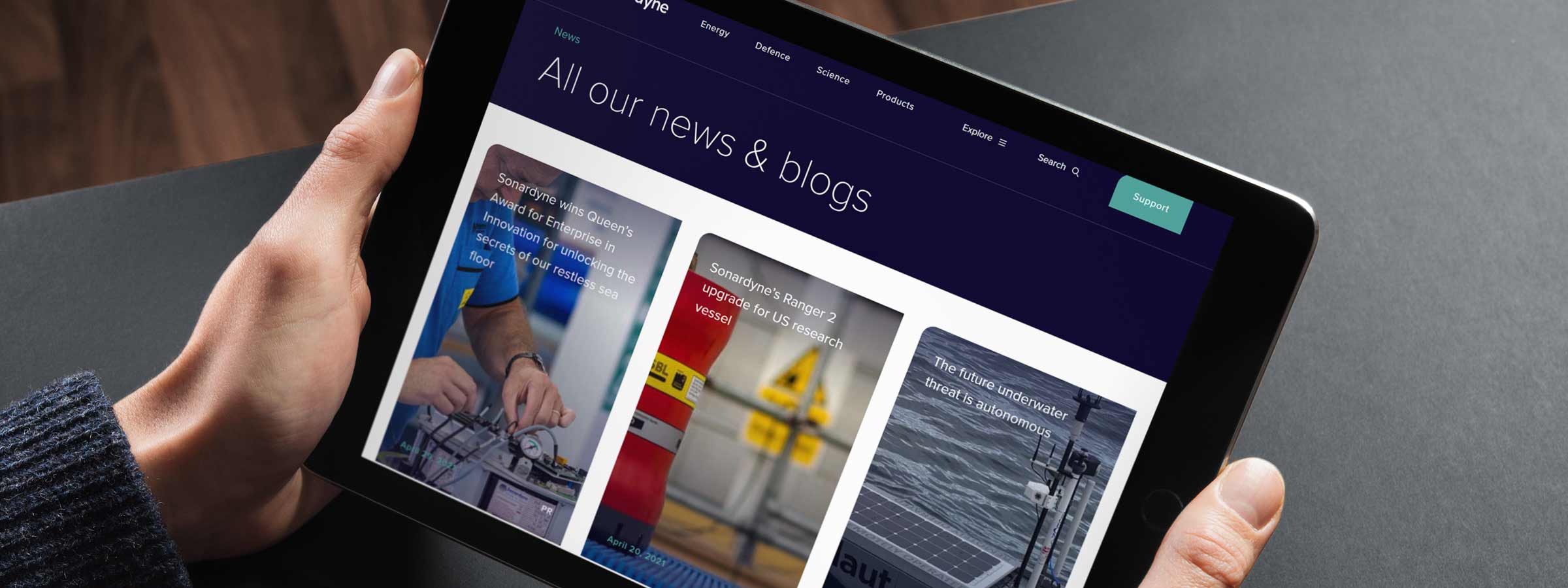Maritime security company, Sonardyne International Ltd., UK, has supplied forward-looking sonar technology to MARSS Group of Monaco for a 120 metre-plus private vessel that was recently delivered to its new owner in Europe. The announcement was made on the opening day of SMM in Hamburg, where Sonardyne is exhibiting on Stand 124 in Hall B6.
The NOAS (Navigation and Obstacle Avoidance Sonar) system was specified for the unnamed vessel to allow it to explore remote, poorly charted places with the assurance that potentially hazardous underwater obstacles can be identified and avoided. The contract also included the supply of Sonardyne’s market-leading diver detection sonar, Sentinel. This complements the NOAS installation to enable the detection of underwater intruders approaching the vessel when stationary.
Integrated into the vessel’s MARSS Group NiDAR command and control system (C2), NOAS images the water column over a wide field of view to offer long range detection and mapping of the seabed, delivering reliable early warning of collision and grounding hazards. When shallow water or an obstruction is detected, NOAS automatically alerts the crew to the danger in order that they can take avoiding action.
NOAS has multiple imaging modes to suit both open water cruising and shallow water, close-in manoeuvring. In 2D mode, the system aids navigation by continuously monitoring 180 degrees in front of the vessel for underwater objects up to 1.5 kilometres away. When sailing close to shore and approaching harbours, NOAS’ 3D mode creates a highly detailed image of the seabed directly ahead of the vessel, displaying water depth and terrain information on an interactive 3D moving map. Uniquely, NOAS stores the sonar imagery for the terrain it has recently passed over, enabling users to instantly explore alternative routes without the need for re-scanning should a sudden change in course be required.
The compact design of the NOAS sonar assembly enables it to be fully enclosed within the bulbous bow of a vessel with nothing protruding external of the hull to affect hydrodynamic performance. This makes the system particularly suitable for retro-fitting into existing vessels and unlike similar forward-look sonars, NOAS can be serviced and maintained without the need for dry docking.
For this project, Sonardyne’s Sentinel diver detection sonar was also integrated with the vessel’s NiDAR installation of ship-mounted cameras and radars to provide a comprehensive off-board surveillance capability. Should any underwater intruders approach the vessel whilst it is in harbour or moored in a secluded bay, the crew will be immediately alerted to their presence, speed and direction – even what type of diving equipment they are wearing.
[blockquote author=” Nick Swift, Sonardyne’s Business Manager for Maritime Security”]”Inaccurate nautical charts and unmarked underwater obstructions represent a major threat to all types of vessel including expeditionary cruise ships, large yachts and military ships. This is where our NOAS underwater forward-looking sonar technology provides a solution, vastly improving the situational awareness for captains and their crews.”[/blockquote]
[blockquote author=” Rob Balloch, Senior Vice-President Sales for MARSS Group “]”MARSS has been associated with the Sentinel sonar and the Sonardyne team for many years and we’re proud to be the launch customer for their new NOAS. Integrating it with the other vessel sensors in our NiDAR command and control platform provides a turnkey-solution that enhances vessel safety and security.”[/blockquote]
For more information about NOAS, click here
